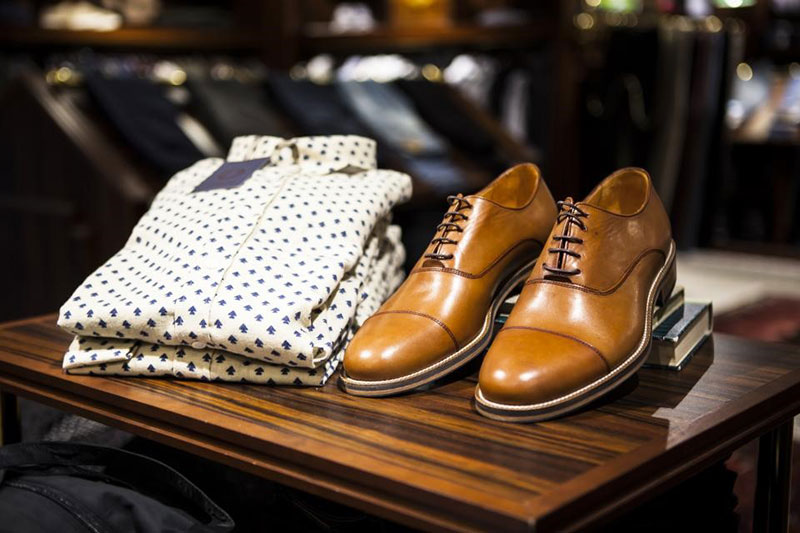Advertisement
When you are living in an area with distinct seasons, you need to figure out a proper system that will help you to keep your clothes organized and safe for a long time so that you may have an easier life. Storing your clothes by season helps you get more space for the clothing that you keep for daily usage. If you are confused about the process of organizing your closet, go through the article to get easy clothing storage ideas. This will help you to save yourself from squeezing in your clothes or wasting time looking for your items when putting laundry away or searching for an outfit to put on.
Pare down your wardrobe
Spend a little time paring down your wardrobe when you are going through your collection. Get rid of extra clothing when switching out your wardrobe. It’s the perfect opportunity to tidy up your drawers and have fewer non-essential things to go through every year. It will help you save a good amount of time in the future.
Wash and Repair
Wash and fold properly before packing away your clothing for several months. Visit your dry cleaner if you have delicate items. Wash stains as well as different odors with great attention to avoid attracting pests like closet moths. To get rid of any mold or mildew problems in the storage containers, make sure to dry your clothes completely before storing them.
Use Vacuum Sealing Process
Using clothes vacuum bags and a vacuum sealing process with a hand pump or vacuum attachment to store seasonal clothes may seem like a good idea as it helps save your storage space. However, when the natural fibers in some clothing are tightly compressed, you might find the material is taking months to return to its natural form.
Clothes made from natural fibers need some air circulation so they can breathe and keep their quality intact. Vacuum sealing can eliminate that. The clothes you need to keep far from vacuum sealing are delicate clothing, such as towels, winter gloves, leather products, sleeping bags, bulky winter coats, comforters, pillows, or anything made from cashmere, wool, or silk.
Use Plastic Storage Containers
Always try using clean plastic storage containers or bins with secure lids for your seasonal clothes storage rather than cardboard boxes as they are susceptible to infiltration from insects and rodents. You might also find them harder to move around. To avoid having tough-to-remove wrinkles and creases, stuff your packages as much as they can handle. Don’t try to overstuff and leave a bit of space in them to allow air to circulate.
Use Mothballs Properly
Mothballs are an effective solution in preventing insects from feasting on your clothes. But as they are kind of a pesticide, there must be a certain level of toxicity in them. To make sure they are not a hazard to children, pets, and you, use them properly. Handle mothballs wearing gloves as the toxicologists suggest.
Get chemical-free mothballs to eliminate your safety worries. Make sure you are using mothballs in an airtight bag or container to make it most effective. Apply the right amount of mothballs and when they lose their potency, replace them to keep your storage safe.
Don’t Hang Certain Items
Some seasonal clothes are not likely to prefer hanging up for months at a time in your closet. So, even if you have enough space, try avoiding certain items that are delicate such as sweaters as they might lose their shape. Rather fold them away or use plastic storage containers to keep them in good shape.
To store long-term delicates like a wedding dress or quilts, wrapping them in acid-free tissue might also prove beneficial. Try using high-quality wood or padded hangers to provide better support for your garments while storing them.
Places to Store the Seasonal Clothes
You might not want to fold all your seasonal clothing to put in storage bins. Using a closet organizer or some helpful accessories might help you create more storage space. Try not to overcrowd your closets as it might end up restricting your regular use of the space. You can use a larger walk-in closet or dressing room, wardrobe, laundry room that has extra cabinet storage space, under-bed storage, or suitcases as an alternative for seasonal clothes storage and free up your closet space.
Use a Climate-Controlled Space
Make sure you store your clothes in a climate control room or area of your home to keep your clothes well-preserved. The area needs to be at inconsistent temperatures, preferably cool. To choose the proper place:
- Keep your clothes in your basement that is not too damp.
- Avoid storing the clothes too close to your furnace.
- Don’t use your garage if it’s not climate-controlled.
- Storing your clothing in a darker space can be a good idea to prevent fading.
Check your stored clothes at least once a year to ensure there are no storage issues.
Avoid Using Plastic Bags
Storing long-term clothes in dry cleaning bags is not advisable. The dry cleaning process does not use any water, but liquid solvents are used. If your clothes are not dried thoroughly, moisture trapped inside the cheap plastic bag might cause mildew as well as yellowing problems on the fabric. It mostly happens when your item is a delicate one. Use some breathable garment bags that are proper for your long-term stored clothing like suits, winter coats, and formal wear that you use sporadically.
The Bottom Line
Try to follow the steps above to keep your seasonal clothes safe and get more space for your daily clothing. Storing the off-season clothes makes your everyday drawers and closet much easier to navigate. When you are done sorting your wardrobe, organizing, and storing your items properly, you will find it easier to pull out what you need when each season arrives.

